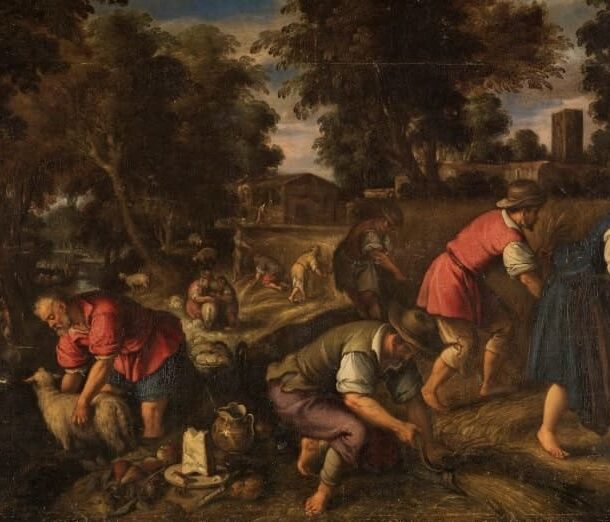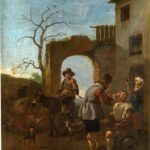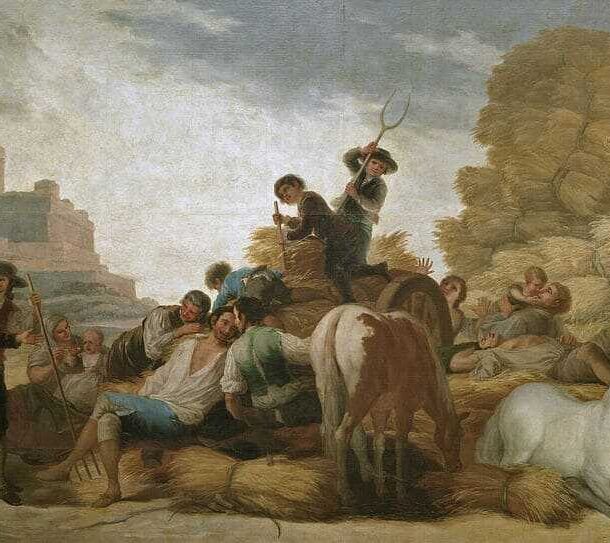
Jan Miel reflects how 17th-century barbers carried out their work. The barber’s profession was one of the best paid, taking into account the time spent, the action itself and the materials used. In this sense, it was not too time-consuming, the materials to carry out his profession were not expensive and the time spent was not too much. However, the remuneration had mainly to do, not with the skill, but with the responsibility of passing the blade across the neck of the man he shaved. Thus, the king’s barber was paid handsomely because he had the monarch’s neck at his disposal. On rare occasions, barbers also acted as bleeders, as can be seen in 17th century Madrid documentation.
Collection: Images
Project: 3. Rural world and urban world in the formation of the European identity., 4. Family, daily life and social inequality in Europe.
Chronology: XVII
Scope: Secondary Education, Baccalaureate, University
Resource type: Image
Format: Oil on canvas (66 x 51 cm)
Source: Museo del Prado (Madrid)
Language: Spanish
Date: 17th century
Owner: Álvaro Romero González (Modernalia)
Identifier: P001576
Copyright: Museo del Prado (Madrid)
Abstract: Street barber plying his trade outside a rural house
Image
Tags






